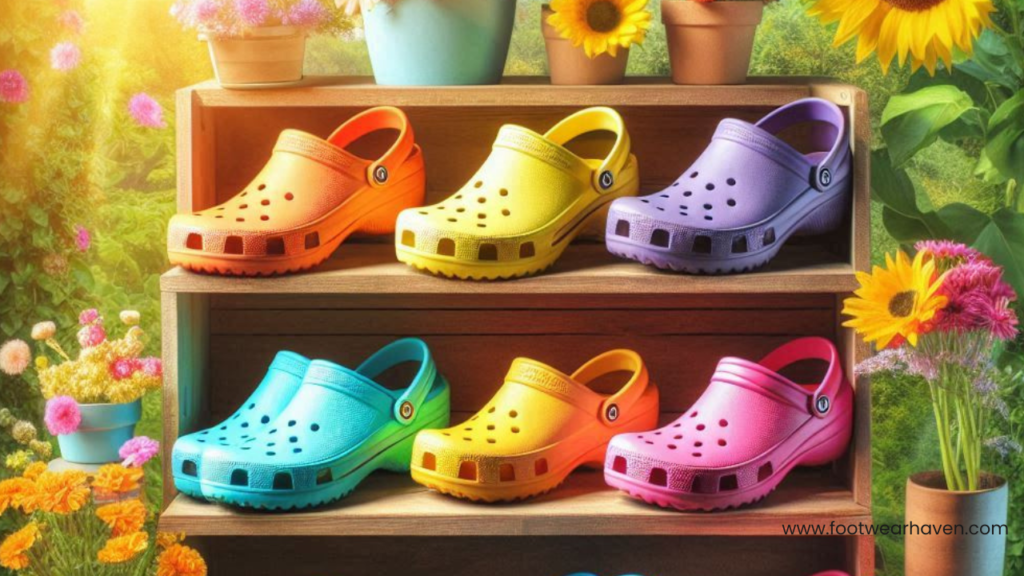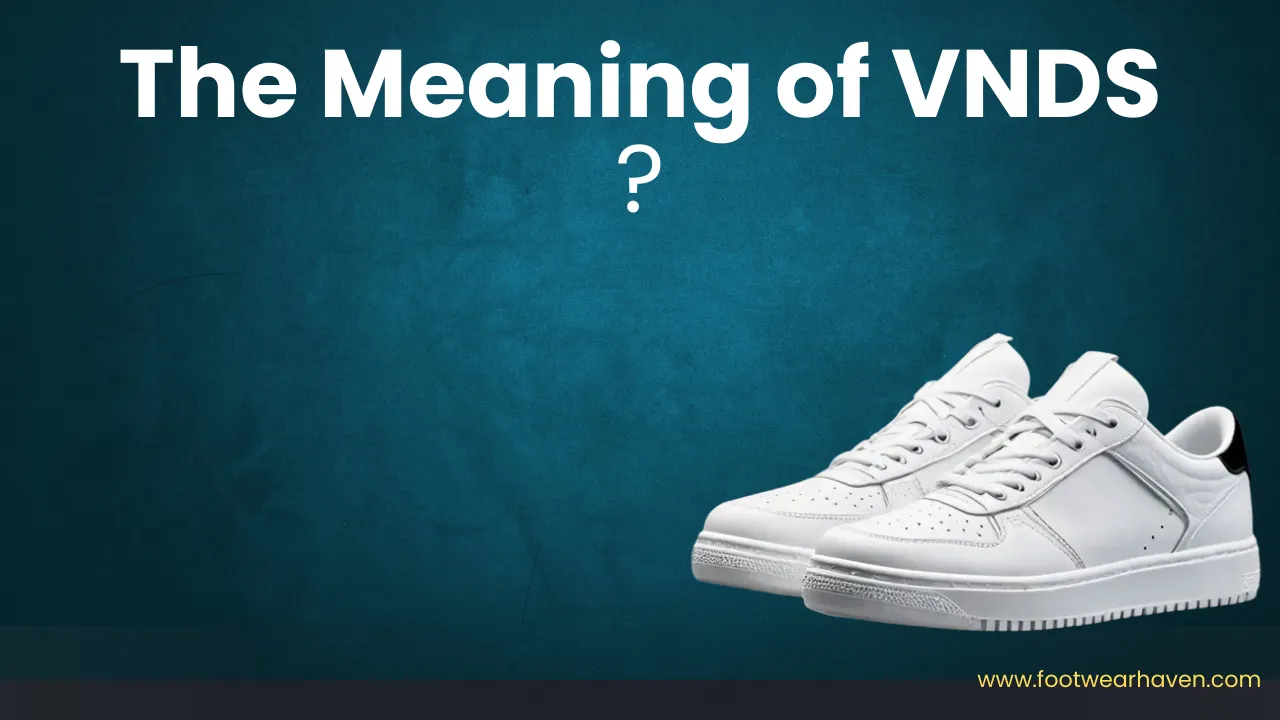The Meaning of VNDS in sneakers is Very Near Deadstock, indicating shoes worn very minimally—perhaps once or twice—and still almost indistinguishable from brand new. Understanding VNDS meaning matters if you’re buying or selling sneakers, since condition affects value, authenticity, and price.
This guide explains what qualifies as VNDS, how it differs from DS (Deadstock), and how to spot real VNDS pairs when shopping.
Table of Contents
ToggleThe Origin of VNDS
VNDS is derived from the term “DS (Deadstock).” Initially, DS referred to unsold inventory, but in the sneaker market, it denotes a pair of shoes that are completely brand new and unworn—even the laces haven’t been undone. VNDS represents a condition just slightly below DS.
The term VNDS emerged in the 2000s within the second-hand sneaker market. With the rise of online platforms like eBay, NikeTalk, and Flight Club, the sneaker market became more active.
Sneaker enthusiasts started buying and trading new and limited-edition shoes on these platforms. Over time, it became evident that a specific term was needed for shoes that were close to new, leading to the popularisation of VNDS.
The Value of VNDS

Have you ever wondered why sneaker collectors might opt for VNDS shoes instead of brand-new ones, even when new releases are available?
A More Affordable Option
Brand-new limited edition sneakers, such as the Jordan 1 or Yeezy 350, are often produced in small quantities and sell out quickly due to high demand. Once they’re sold out, finding the same pair brand new can be challenging—and prices tend to be steep.
VNDS shoes offer a nearly-new condition but come at a lower price, allowing you to get that sought-after pair at a more reasonable cost.
Demand for Discontinued Shoes
Some classic sneaker models are discontinued after years on the market. For example, early colorways of the Nike Dunk have become rare as production stopped. A well-preserved VNDS pair may be your only chance to own a discontinued model.
Collectable & Display Value
If you’re new to sneaker collecting, you might assume that only DS shoes hold collectible value. While condition does play a role in a shoe’s value, it doesn’t mean only brand-new pairs are worth collecting. VNDS shoes can look just as good as new and still hold strong display value.
How to Determine if Shoes Are VNDS
A pair of very near deadstock red and black Air Jordan 1
Finding a great pair of VNDS shoes can be tricky. Whether buying online or in person, you need to carefully check the condition of various parts of the shoe.
1. Soles
VNDS shoes should show minimal wear on the soles. This wear should be hardly noticeable, with no oxidation, discoloration, or stains.
2. Uppers
The uppers may have slight signs of wear, such as minor creasing, but there should be no visible scratches or wrinkles—any wear should be barely noticeable on close inspection.
3. Lining
The lining of the shoe should not show any noticeable wear, stretching, or deformation. It should be clean, with no visible stains.
4. Insoles
The insoles should not have noticeable damage or deformation. VNDS shoes might have minor foot impressions, but they shouldn’t be immediately obvious.
5. Laces
Laces should show no signs of fraying, pilling, or discoloration, and should not appear stretched or loose. If the laces are faded, the shoes cannot be considered VNDS.
6. Accessories
If the shoes originally came with accessories, like extra laces, lace locks, or tags, make sure everything is still included. Missing or worn-out accessories disqualify shoes from being VNDS.
7. Box & Packaging
VNDS shoes should come with the original box in good condition, without noticeable damage. Any original protective paper should also be included to preserve the shoes’ condition.
Complete Grading for Second-Hand Shoes
In the second-hand sneaker market, shoes are graded based on their condition. Here are seven levels to help you understand how shoes are classified:
1. DS (Deadstock)
DS shoes are brand new, with all accessories and packaging intact. If the box remains sealed, the shoes’ value increases further. DS represents the highest grade in the second-hand market, with price being the only factor.
2. VNDS (Very Near Deadstock)
VNDS shoes are one grade below DS, in nearly new condition. They have been worn only a few times, with minimal sole wear and possibly slight creasing on the uppers. Like DS shoes, they come with their complete box and original accessories.
3. 9/10
Shoes graded 9/10 show slight signs of use. The soles show minimal wear, but the tread pattern is still clear. Uppers may have some creasing or wear, but the overall appearance remains good. Most accessories are intact, but minor items like tags or extra laces might be missing.
4. 8/10
Shoes rated 8/10 show moderate wear. The soles may be slightly worn, but patterns are still visible. Uppers show noticeable creases and folds, but with no major scratches or damage. Some accessories may be missing, and the box may show minor damage.
5. 7/10
A 7/10 shoe shows significant wear, with heavily worn soles and noticeable scratches on the uppers. The insoles have visible foot impressions, and all accessories are missing. The box may be damaged or incomplete.
6. Beaters
Beaters are shoes with almost completely worn-down soles and significant damage to the uppers. The lining is worn, and the box is heavily damaged or missing. These shoes have no collectable value and are only suitable for everyday wear.
Care and Maintenance of VNDS Shoes
In addition to minimising wear, proper care and maintenance are crucial for VNDS shoes. Neglect can lead to dust, dirt, or discolouration from sweat and environmental exposure.
Before jumping into shoe collecting, it’s essential to learn some maintenance techniques to keep your shoes in great shape over time.
1. Store
Store shoes in a well-ventilated space to prevent mold growth. Avoid direct sunlight, as UV rays can cause discoloration. Keep shoes in their original box, with dust paper, and use shoe trees to maintain shape.
2. Clean
Use a soft-bristle brush or damp cloth to clean the soles and uppers. For leather or suede shoes, use appropriate cleaners and brushes. Avoid water contact with the uppers, as it can lead to deformation.
3. Regular Inspection
Perform monthly inspections to clean any stains and address minor creases. This will help maintain the shoes’ quality.
5. Rotation
Rotating your shoes with others reduces wear and tear, helping maintain their condition over time.
Final Words
Not all shoes meet the VNDS standard. To qualify, shoes must show minimal wear, have all original accessories, and be well-cared for by the seller. When considering a VNDS pair, ask about its usage and carefully inspect its condition. This guide will help you find the perfect pair. For more sneaker tips and insights, stay tuned!

